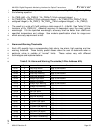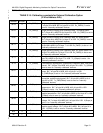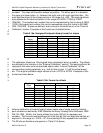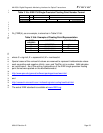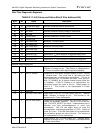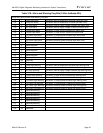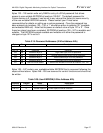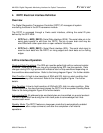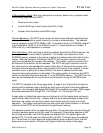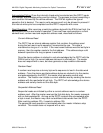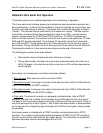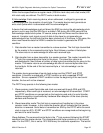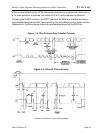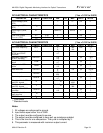
AN-2030: Digital Diagnostic Monitoring Interface for Optical Transceivers F i n i s a r
9/26/02 Revision D Page 30
Acknowledge Polling: Once the internally-timed write has started and the DDTC inputs
are disabled, acknowledge polling can be initiated. The process involves transmitting a
start condition followed by the device address. The R/W bit signifies the type of
operation that is desired. The read or write sequence will only be allowed to proceed if
the internal write cycle has completed and the DDTC responds with a zero.
Read Operations: After receiving a matching address byte with the R/W bit set high, the
device goes into the read mode of operation. There are three read operations: current
address read, random read and sequential address read, described as follows:
Current Address Read
The DDTC has an internal address register that contains the address used
during the last read or write operation, incremented by one. This data is
maintained as long as V
cc
is valid. If the most recent address was the last byte in
memory, then the register resets to the first address. This address stays valid
between operations as long as power is available.
Once the device address is clocked in and acknowledged by the DDTC with the
R/W bit set to high, the current address data word is clocked out. The master
does not respond with a zero, but does generate a stop condition afterwards.
Random Read
A random read requires a dummy byte write sequence to load in the data word
address. Once the device and data address bytes are clocked in by the master,
and acknowledged by the DDTC, the master must generate another start
condition. The master now initiates a current address read by sending the device
address with the read/write bit set high. The DDTC will acknowledge the device
address and serially clocks out the data byte.
Sequential Address Read
Sequential reads are initiated by either a current address read or a random
address read. After the master receives the first data byte, the master responds
with an Acknowledge Bit. As long as the DDTC receives this acknowledge after
a byte is read, the master may clock out additional data words from the DDTC.
After reaching address FFh, it resets to address 00h.
The sequential read operation is terminated when the master initiates a stop
condition. The master does not respond with a zero.



